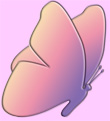Yoga Glossary I–N |
|
|
| A–C D–H I–N O–R S–Z |
- Id:
- One of Freud's three levels or states of mind—the primitive, instinctual mind state (child state).
- Ida:
- One of the three primary nadis—see Hatha and nadis.
- Indriya:
- The senses.
- Irrational:
- In REBT, where rational thinking support people with their individual and community goals and purposes, irrational thinking creates obstructions; it disables progress. Irrational behaviour is self-defeating.
- Ishvara-pranidhana:
- Devotion; one of the five attributes of niyama (self-restraint).
- Kaivalya:
- A term often used as a synonym for moksha in many schools of Postclassical Yoga. Although strictly speaking it translate as 'aloneness'—the unbroken awareness of the contents of consciousness.
- Klesha:
- Affliction or obstacle—emotional reactions.
- Manas:
- The desiring mind 'I want' (the lower mind the deals with the information received by the senses).
- Mirroring:
- The term 'mirroring' is used to describe Jean Paul Sartre's view that we see ourselves as reflected through 'the other'.
- Moskha:
- Liberation—a shift in consciousness that transcends all duality. A paradox due to the realisation that both liberation and bondage are constructs based on perception and ultimately have no significance hence, it is said that there is neither bondage or liberation, but only the Absolute.
- Nadis:
- The nadis are the body's circulatory energy system, sometimes referred to as nerve endings (although not in the traditional Western sense). In yogic tradition, the nadis are the manifestation of pranamaya kosa. As mentioned earlier, the nadis are a network of subtle energy channels that sustain the physical body. There are approximately 72,000 nadis in the body, which include three primary channels and energy centres known as chakras. The central channel, which runs along the spinal cord, is called the sushumna (most gracious channel). Two other primary channels wind around the sushumna, these are known as ida (channel of comfort) and pingala (tawny current).
- Negative Feelings:
- In REBT, negative feelings can be both healthy and unhealthy. Without healthy negative feelings we would not try to avoid stressful or dangerous situations. In contrast, unhealthy negative feelings create uncontrollable reactions that are self-defeating ie: rage, anger, depression, self-pity and panic.
- Niyama:
- self-restraint. Niyama, the second limb of the eightfold path taught by Patanjali consists of five attributes—shauca (purity), samtosha (contentment), tapas (asceticism), svadhyaya (self-study), ishvara-pranidhana (devotion)—also see eightfold path.


